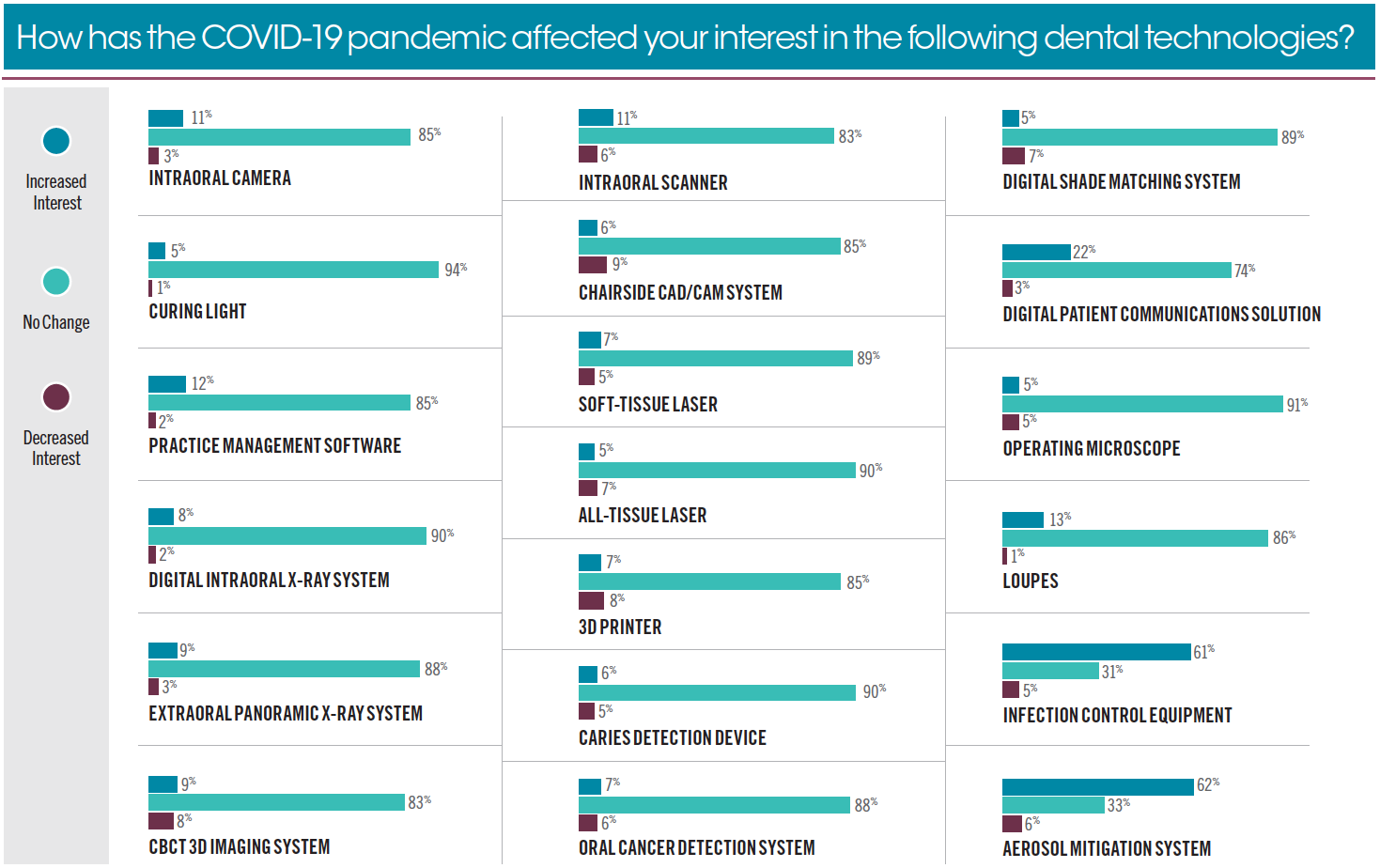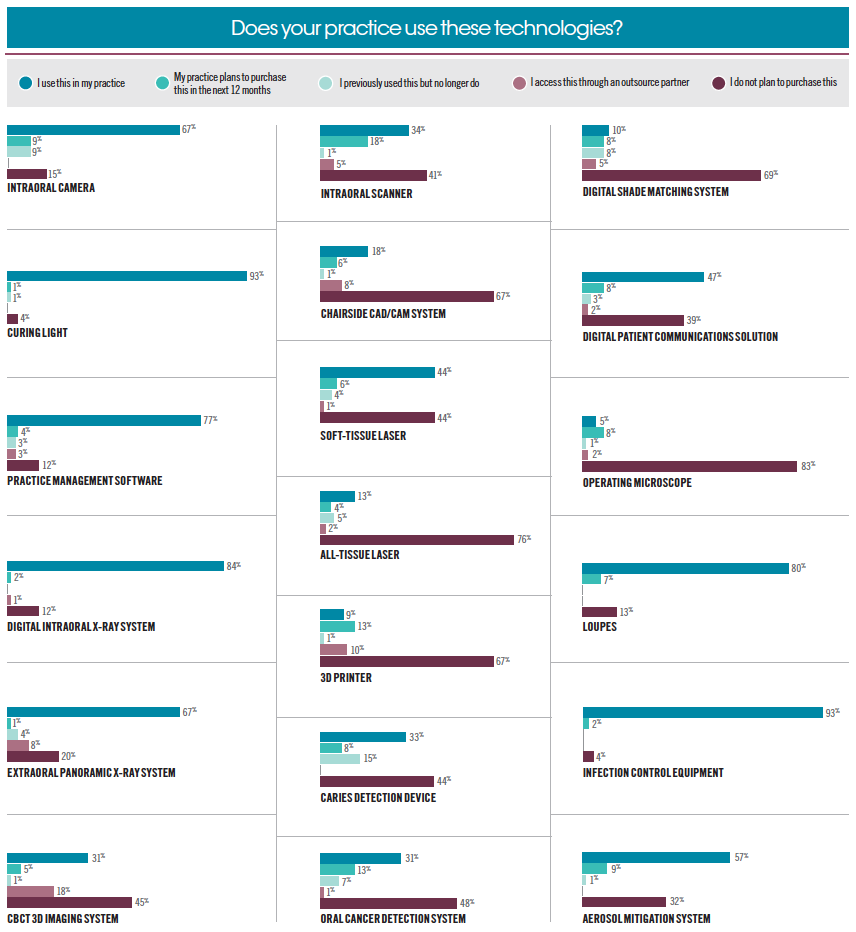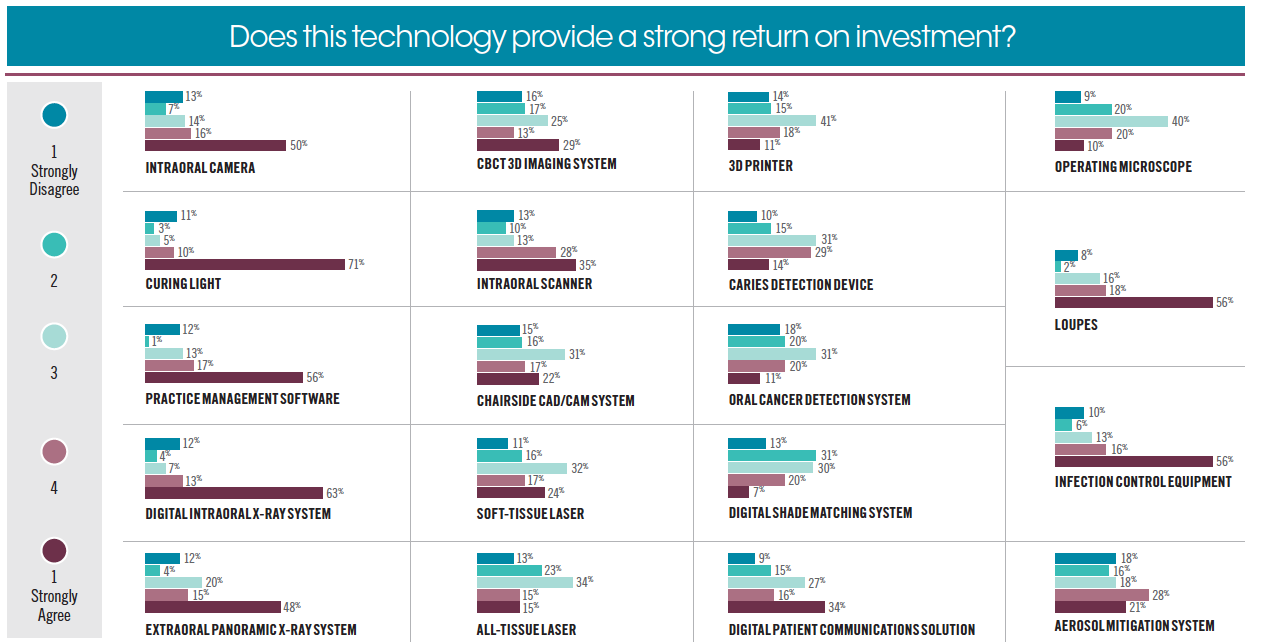- About Us
- Advertise
- Editorial
- Contact Us
- Terms and Conditions
- Privacy Policy
- Do Not Sell My Personal Information
© 2025 MJH Life Sciences™ and Dental Products Report. All rights reserved.
Dental Technology Priorities Show the Impact of COVID-19
Presenting the results of the Dental Products Report® 2021 Technology Census

The rapid pace of change in dentistry is being pushed by new technologies designed to make all aspects of oral health care and running a dental practice simpler and more efficient.
New technologies establish themselves as improvements over earlier approaches to the same tasks, and this leads to greater adoption of these solutions. But for every digital x-ray sensor that moves from a high-tech wonder to standard equipment, a new technology comes along to replace it.
Dental professionals across the US participated in the Dental Products Report® 2021 Technology Census. The results presented here provide an overview of the technologies having the biggest impact on dentistry today and those primed to make a difference in the future.

Research Leads the Way
Responses to this question have remained consistent over the years with the first- second- third- and fourth-place choices rarely changing year to year. But the big change this year is the increase in the number of dentists identifying as “researchers,” which jumped from 54% in 2020 to almost 62% this year. That jump corresponds with a smaller jump from 6% to almost 8% for the “impulse shoppers.” And the number of “dreamers” and “ROI [return on investment] fanatics” both decreased by approximately 5% from 2020 to 2021.

Pandemic Priorities
For the majority of dental technologies, the COVID-19 pandemic did not have a major impact on the technologies most exciting to dentists, but there were some areas showing pandemic-related changes. Unsurprisingly, the categories with the biggest increase in interest were aerosol mitigation solutions and infection control equipment. Digital patient communications systems were also in demand because of the pandemic, and interest in loupes, intraoral cameras, and intraoral scanners also increased by more than 10%. Although no category saw interest drop by as much as 10%, big-ticket technologies such as cone beam systems, chairside CAD/CAM systems, and 3D printers experienced the largest drops.

Technologies in Demand
It’s clear from the survey results that certain technologies, such as curing lights, practice management software platforms, loupes, and digital intraoral x-ray sensors, are just about standard. More than 75% of practices reported using some or all of these solutions. The fastest-growing technologies include 3D printers, intraoral scanners, and cone beam imaging systems. These technologies all experienced growth in the percentage of practices using them while also showing strong demand, as many practices plan to add these technologies in the next year. A new entry to the survey this year, aerosol mitigation technologies, is already making an impact: Fifty-seven percent of practices are using this type of technology. When it comes to technologies that practices are not interested in, operating microscopes are at the top once again, followed by all-tissue lasers, and digital shade matching systems.

Changing the Future
When it comes to technologies with the potential to change the future of dentistry, opinions varied greatly. Bioactive/antimicrobial materials was the only technology to win support of more than 25% of respondents, but 3D printing was close behind at just over 24%, and digital impressions was the favorite technology of almost 20% of survey respondents.

Technologies Worth the Cost
When it comes to a technology’s ROI, the results are far more balanced this year compared with the 2020 Technology Census. Although digital x-rays and loupes were both top options for providing ROI, the top spot in this year’s census goes to curing lights. Infection control equipment, practice management software, and intraoral cameras also were thought to have good ROI potential by at least half of the survey’s respondents. On the opposite end, every technology in the list was believed to not provide a clear ROI by between 8% to 18% of the respondents.

Attention-Grabbing Tech
When it comes to technologies that patients notice, almost every kind performed well, with intraoral cameras leading the way. More than 50% of survey respondents said they strongly agree that these cameras make a good impression on patients. Likely spurred by the COVID-19 pandemic, infection control equipment was also a top choice this year, with 47% saying it is a technology that can impress patients. Digital x-rays, intraoral scanners, chairside CAD/CAM, and cone beam systems also were believed to impress patients. Technologies falling at the other end of the spectrum include curing lights, practice management software, and 3D printers.

 Download Issue: Dental Products Report July 2021
Download Issue: Dental Products Report July 2021

